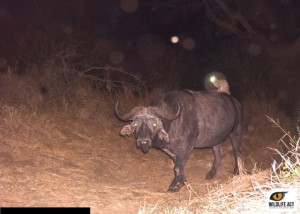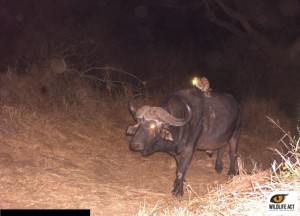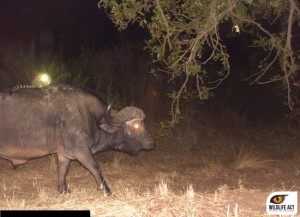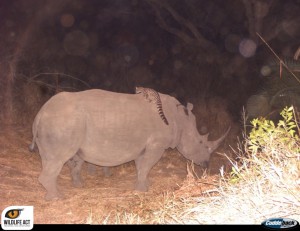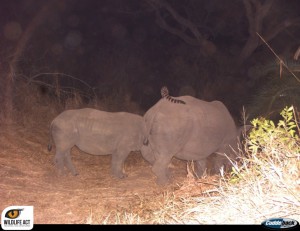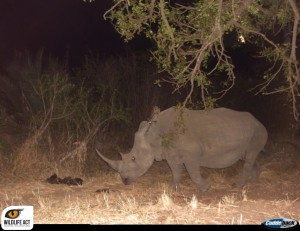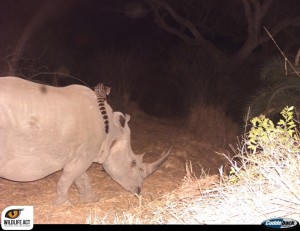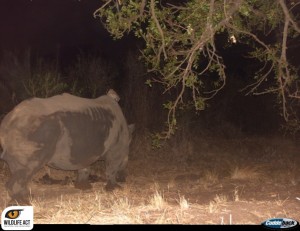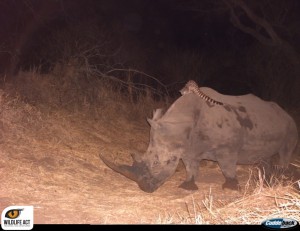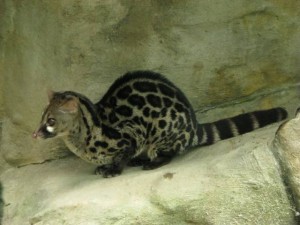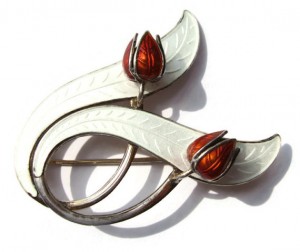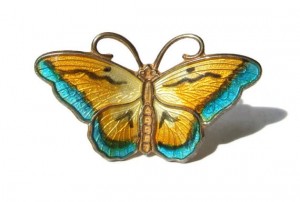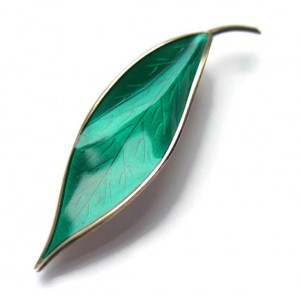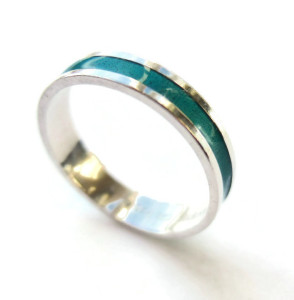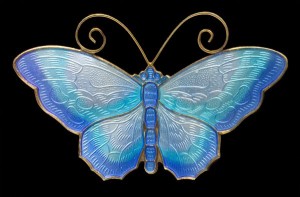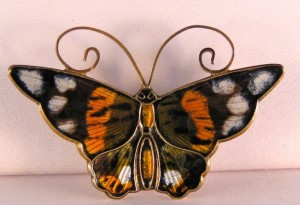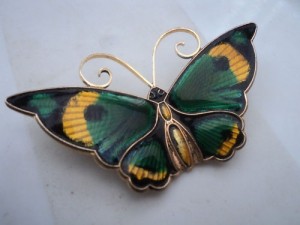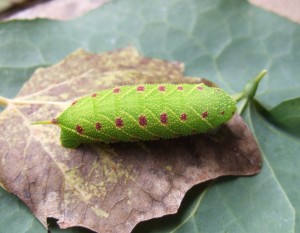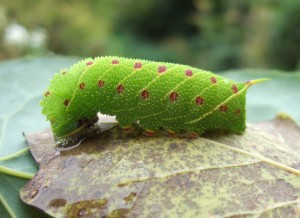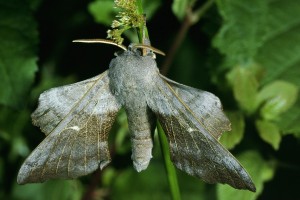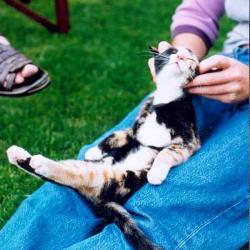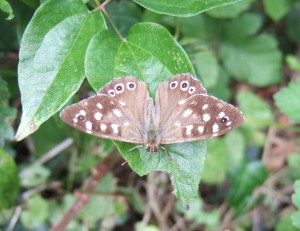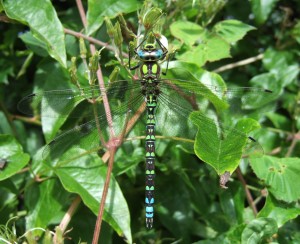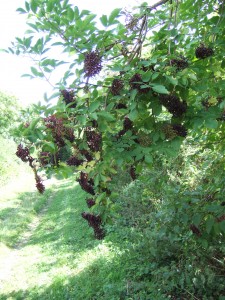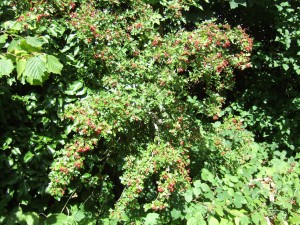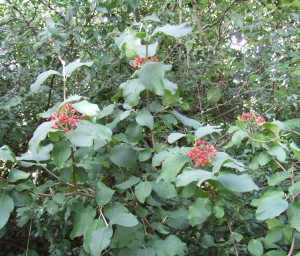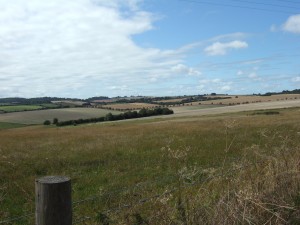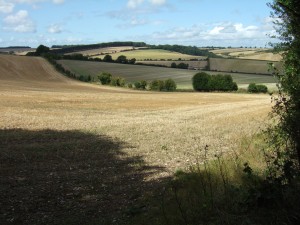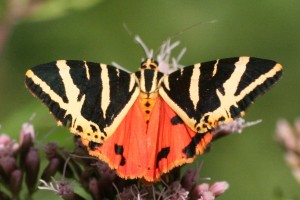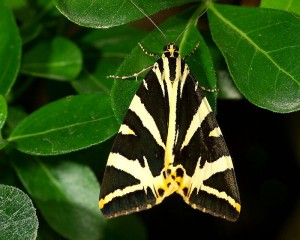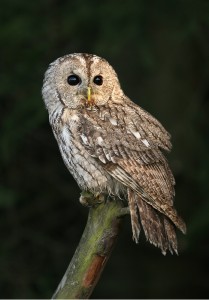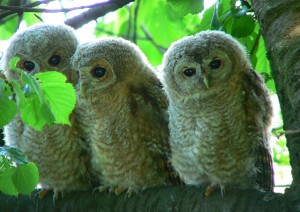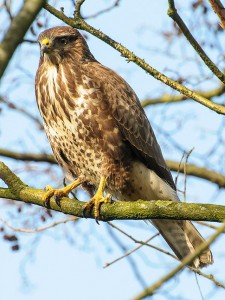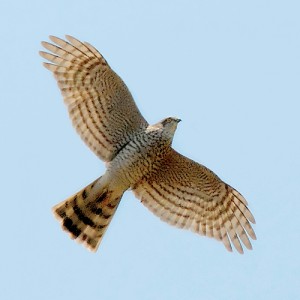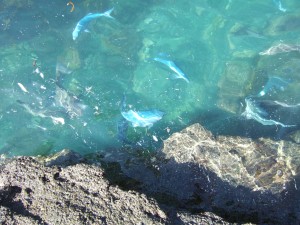Now I know this isn’t for everyone, but I love insect jewellery. There’s something about the idea of wearing a bee or a spider or a ladybird as adornment: quirky, fun, and a pretty little celebration of the beauties of the natural world. They’re certainly not for those with arachnophobia or other squeams (I don’t know if that is a word, but if you can be squeamish, I don’t see why not!)
Scarab beetles were incredibly popular among the Ancient Egyptians for many centuries. Of these, the most famous example must be the stunning pectoral (chest decoration) from Tutankhamun’s tomb with its central yellow scarab, carved from glass sourced from the Libyan desert. This glass is really unusual—it was formed when a meteorite hit the desert sand and the extreme heat formed glass (glass is made from silica, and the most common constituent of sand is silica). The pectoral dates to c. 1323 BC.
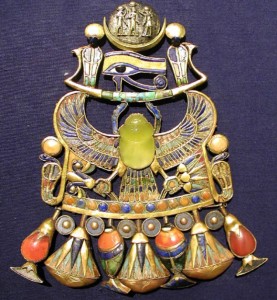
The central yellow scarab beetle in Tutankhamun’s pectoral. The beetle is carved from Libyan desert glass, formed when a meteorite struck the sands of the desert.
I had a wonderful early Victorian turquoise glass scarab brooch in my shop, and was very sad when it sold—it was my favourite piece. I don’t know who made it, but whoever it was they had the most fantastic eye for detail and craftsmanship. It was a pretty wee thing and the level of detail was amazing. The lady who bought it adored it too and told me it was her favourite piece of all her jewellery. I love hearing things like that from my customers: it makes it so rewarding.
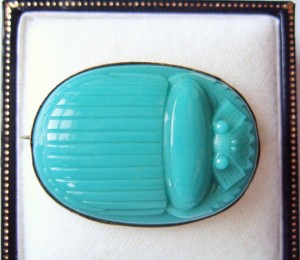
Early Victorian turquoise glass scarab brooch. Sold in my Etsy shop. (NOW SOLD).
The Victorians had a particular passion for insect jewellery. Their brooches were often expensive pieces, made with platinum or gold and encrusted with precious stones such as diamonds, rubies, sapphires and emeralds.

Victorian sapphire and diamond bumblebee brooch.

Victorian Abalone pearl, ruby, diamond and gold beetle brooch. French.
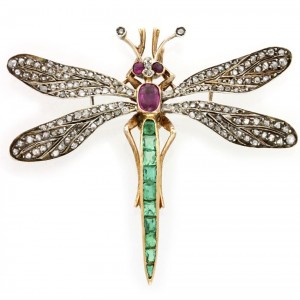
Victorian emerald, ruby and rose-cut diamond dragonfly brooch.
And I couldn’t leave out a nod to The Master, René Lalique (1860-1945). Here is a wasp hat pin of his:
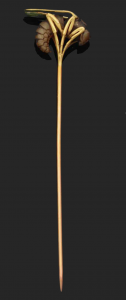
René Lalique wasp hat pin.
Simply stunning.
I have three pieces of insect jewellery in my Etsy shop at the moment, none as grand as those above, but charming nevertheless.
A pair of spider brooches with green glass facetted stones for their abdomens and thoraxes make me chuckle every time I see them. They are joined by a chain and so can be positioned differently every time they are worn. They are made by a company called Mizpah; I haven’t been able to find out anything about this company so far. I think they date from the 1950s but they might be earlier. (Okay, I know spiders aren’t insects, they’re arthropods, but humour me in lumping them in with their six-legged friends). The bigger spider is ginormous – a full 69 mm (2 3/4 inches) across!
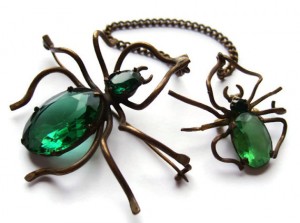
Two spider brooches joined by a safety chain. For sale in my Etsy shop. (NOW SOLD).
I also have a more modern beetle brooch, bejewelled with green rhinestones. He’s another behemoth of the insect world—he’s 58 mm (2 1/4 inches) long, not quite up to the size of Daddy Longlegs above but giving him a run for his money!

Vintage jewelled beetle brooch. For sale in my Etsy shop. (NOW SOLD)
I bought him because I love the colours. Green beetles always make me think of the amazing dress made for the famous actress Ellen Terry, when she played Lady Macbeth: goodness knows how many thousand green beetle carapaces were sewn on to the dress. The stunning painting by John Singer Sargent of Ellen Terry wearing the dress is in the Tate Gallery in London.
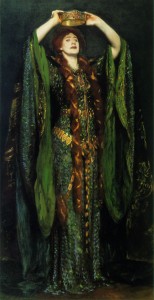
Ellen Terry as Lady Macbeth, by John Singer Sargent, 1889.
The dress itself is on display at Terry’s house, Smallhythe Place in Kent, under the stewardship of the National Trust.
My third piece is a gorgeous fluttery butterfly which has settled on a silver ring: blue and green guilloche enamel decorates the wings, and the two antennae bend back towards the body.
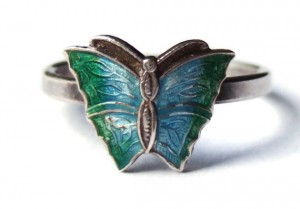
Vintage guilloche enamel and silver butterfly ring. For sale in my Etsy shop. (NOW SOLD).
The ring is not marked with a maker but it is similar to Scandinavian examples so I wonder if that region might be its homeland. (I had a pair of enamel butterfly earrings by Norwegian silversmith Hroar Prydz, but unsurprisingly they sold pretty quickly—they were absolutely gorgeous!)
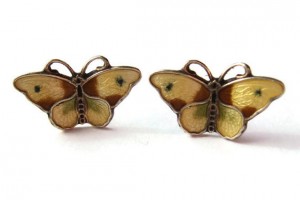
Hroar Prydz enamel butterfly earrings. Sold in my Etsy shop. Sorry ladies! (NOW SOLD).
UPDATE 19 August 2014:
I now have a beautiful small Hroar Prydz butterfly brooch for sale in my shop:
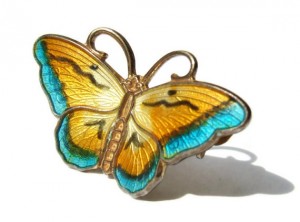
Hroar Prydz small butterfly brooch, silver, vermeil and guilloche enamel, 1950s, for sale in my Etsy shop. (NOW SOLD).
UPDATE 26 August 2014:
I’ve gone bug crazy! I have another insect brooch in my shop now, a lovely little sterling silver and turquoise insect brooch. I think it might be from the US – Southwestern/Native American/Navajo jewellery. Wherever it comes from, it’s a buzzy delight!
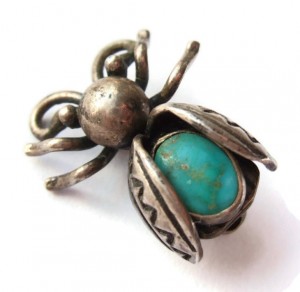
Sterling silver and turquoise insect brooch, for sale in my Etsy shop. (NOW SOLD).
